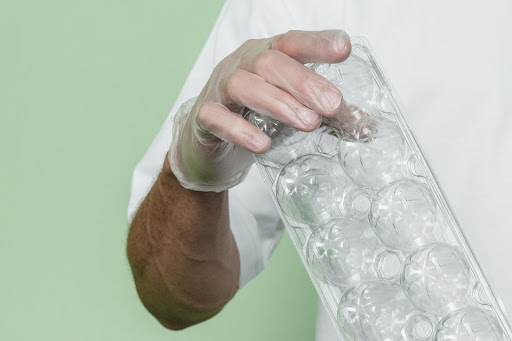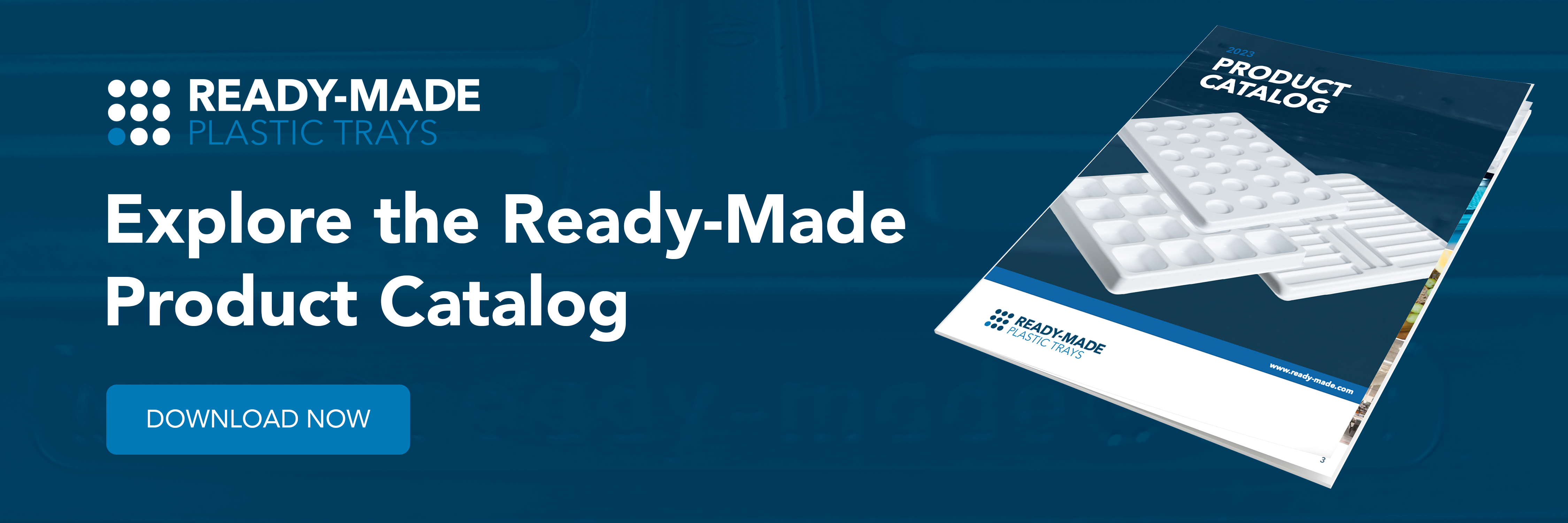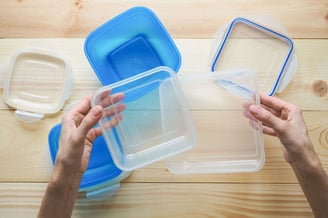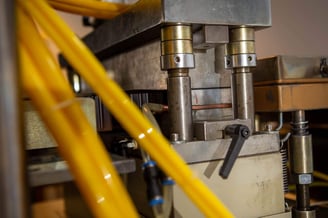What Is Thermoplastic? Discover the Solution For Custom Plastic Trays

Custom plastic trays for shipping and packaging must have at least four traits to check the boxes for manufacturers and OEMs:
- Durable
- Affordable
- Customizable
- Quick to produce
This is where thermoplastics — and the thermoforming process — come into play. Alternative packaging options, such as injection-molded trays (which also technically use thermoplastics) and cardboard crates (which don’t), fall short on one or more of these key considerations. Here’s a deeper dive into the traits that set thermoplastics and thermoformed plastic trays apart from the pack.
Introducing Thermoplastics — Your Solution For Quality Packaging Trays
A thermoplastic is any plastic material made from polymer resins that can be heated and reshaped, then cooled into a stable new format. Not all plastics are thermoplastics, but there are many formulations that fit into this large umbrella category. These include, but are not limited to:
- Polystyrene (PS)
- High Impact Polystyrene (HIPS)
- Polyethylene Terephthalate (PET)
- Polyethylene Terephthalate Glycol (PETG)
- High-Density Polyethylene (HDPE)
- Polyvinyl Chloride (PVC)
- Polycarbonate (PC)
- Acrylonitrile butadiene styrene (ABS)
- Acrylic (“Plexiglass”)
- Nylon
- Cellulose Acetate
These and other thermoplastics are the materials used in manufacturing processes like injection molding and thermoforming to create custom-molded plastic goods — such as shipping trays. Your choice of material will depend upon features like cost, optical clarity, flexibility, rigidity, and other characteristics as needed in the final product.
Thermoplastics vs. Thermoforming: What’s the Difference?
These two terms sound similar — and are overlapping in meaning — but they’re not synonymous and cannot be used interchangeably.
What Is Thermoplastic? |
What Is Thermoforming? |
|
Thermoplastic refers to the physical material itself. Thermoplastics are the various types of polymer resins that can be used in processes such as thermoforming. All thermoforming processes use thermoplastics, but not all thermoplastics are used in thermoforming. Injection molding is another example of an application for thermoplastics. |
Thermoforming is a manufacturing process (actually, a few types of processes) that uses thermoplastics to create custom shapes. The process involves heating a flat sheet of thermoplastic and re-forming it into a specific shape with a two-sided pressure mold. This shaped plastic can then be cooled, hardened, and trimmed into a final product. |
Advantages of Thermoplastics and Thermoform Trays
In comparison with other manufacturing materials and processes, thermoformed plastic trays are easy to quickly produce in either small or large volumes, as needed, at an affordable cost. Since almost any thermoplastic can be used in thermoforming, you have plenty of flexibility to select the polymer with ideal traits for your trays.
At Ready-Made Plastic Trays, we prefer to use High Impact Polystyrene (HIPS) for most of our trays. This option produces trays of high quality and impressive durability even in relatively thin-walled tray designs.
Can Thermoforming Plastics Be Recycled?
One of the major benefits of thermoformed plastics is that they are, by and large, recyclable. This is due to the central feature of thermoplastics: their ability to be easily reheated and remolded for new products and purposes. Post-production cuttings and trimmings from cooled trays can be sent right back to your material source, melted down, and renewed into fresh thermoplastic sheets, eliminating waste from the supply chain.
While the polymers in a thermoplastic tray are strong, the bonds between the molecules are weak and easy to reform. This is why thermoplastics can be reused almost indefinitely in recyclable plastic trays — a great contribution to a circular economy.
Why Use Thermoforming For Custom Plastic Trays
If you’re choosing a thermoforming process for your packaging or shipping trays, odds are you’re interested in benefits such as:
- Sizable cost savings on cheap thermoplastic materials
- The ability to produce trays rapidly and efficiently in flexible volumes
- An extremely high level of customizability, which can be completed quickly
- More durability and moisture resistance than cardboard packaging
In general, thermoformed trays streamline and reduce the costs of your packaging while providing the opportunity to shape them to highly precise specifications. Thermoforming substantially reduces the costs of customizing tray designs when compared with injection-molded thermoplastics due to the comparatively simple molding process and technology.
Creating functional injection mold equipment for a custom design can take months, whereas a custom thermoformed tray can often be produced in weeks at a tiny fraction of the cost.
Need Customized Thermoplastic Trays? Work With an Expert.
Ready-Made Plastic Trays is committed to the satisfaction of all of our customers, and we regularly work with companies on unique solutions for shipping delicate and complex parts. Contact our team to learn more about our services or browse our selection of stock trays and customization options today.


.jpg?length=328&name=Depositphotos_185373910_S%20(1).jpg)


